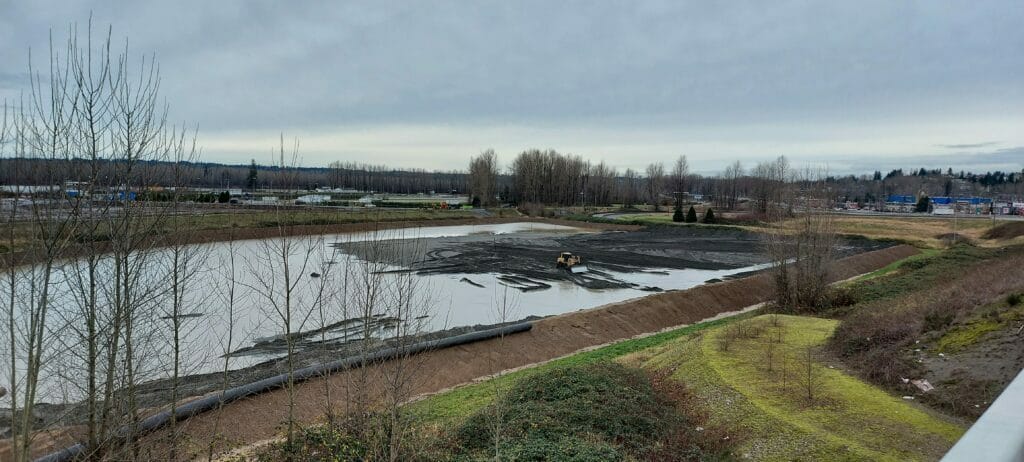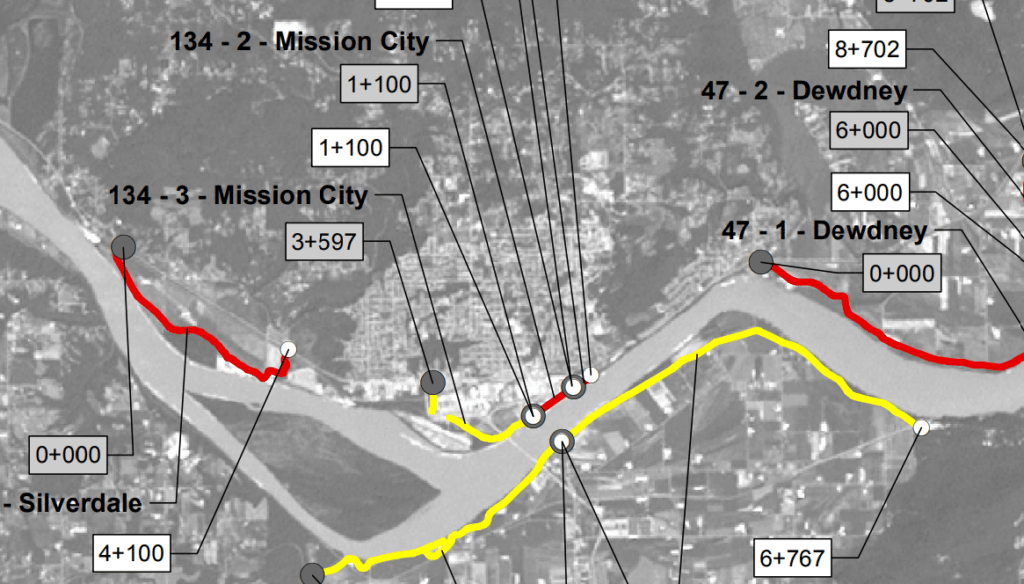- Fraser Valley Current
- Posts
- Will a ‘superdike’ be built in time to protect Mission’s waterfront?
Will a ‘superdike’ be built in time to protect Mission’s waterfront?
Mission’s waterfront is vulnerable to even a moderate Fraser River flood. The city has a plan to fix it, but when the area is fully protected will depend on property owners—or senior levels of government.

As urban revitalization projects go, Mission’s waterfront redevelopment might be more urgent than most. In fact, it could avert a full-blown disaster—if it gets completed in time.
Of all the many Fraser Valley communities susceptible to flooding, few have so many commercial businesses concentrated in such a vulnerable area as Mission. Its waterfront businesses are susceptible to even a moderate Fraser flood, particularly because of the region’s insufficiently high dikes.
For decades, warning bells have sounded about the threat posed by a major flood. A large flood could swamp insufficiently high dikes and do billions in damage.
In Mission, though, even a more moderate flood could be disastrous. The city’s easternmost dike protects dozens of businesses and is predicted to be one of the first to fail in case of a moderate Fraser River flood. While a one-in-100-year flood might be limited to outlying areas in Abbotsford or Chilliwack, it would submerge most of Mission’s industrial waterfront area, according to modelling. And that’s before taking climate change into effect.
There is a plan to fix that. In fact, it’s one of the largest municipality-driven and -financed flood protection projects in the province. But when it fully protects the area will likely depend on property owners’ desire to tear down existing buildings and put up new ones.

That plan, or at least the technology, has a name: a superdike. That’s a dramatic title for an exceedingly simple concept: raising a large mass of land above a floodplain. That land then becomes a dike itself and part of the flood protections for the entire area. In Mission, the raised land will be set back several metres from the river, to attempt to preserve as much of the river’s ecosystem as possible—and to decrease the risk and challenges posed by erosion.
The first stage of the project is already underway. Crews are now dredging the Fraser River as part of a massive project to install a new sewer pipe between Abbotsford and Mission. Material that is removed from the river is being methodically placed west of the CPR bridge to raise the land there.

That’s the easy part. The dike is also too low east of the bridge, and the land there will be raised when property owners decide to redevelop their properties. That, officials say, will take time.
“That side has a lot of smaller parcels,” Gerald Schlesiger, Mission’s project manager for the waterfront development. “So there’s going to have to be some coordination with those property owners to raise it either block-by-block or maybe a couple blocks [at a time] to make it worthwhile for them.”
Flood protection work is incredibly expensive. And while senior levels of government occasionally hand out grants to pay for the work, diking and flood protections are largely left to municipalities and local governments.
Since Sumas Prairie flooded, Premier John Horgan has admitted that his government must change the current funding system for flood protection. That could lead to more funding to kickstart flood protection work. But it’s too soon to say how that might happen, or what impact it might have on the Fraser Valley: dikes need upgrading all over the region..
As is, Mission’s waterfront project would enable much of that flood protection cost to be borne by landowners. But there is still uncertainty around when the dikes (or superdikes) will be high enough to fully protect the area. Raising one part of a dike is of limited value if other stretches remain too low. The Sumas disaster illustrated how floodwaters can blow huge holes in dikes when water begins to overtop just a portion of them.

In the meantime, Mission’s waterfront plan is progressing. Mission expects to reveal its master plan in early 2022. And it’s hoped that plan and its land use rules, when adopted, will spur a wave of development, turning what is now an industrial area into one with more residents, more retail outlets, and more commercial verve. If it comes together quick enough, it may also avert a future disaster.
Reply